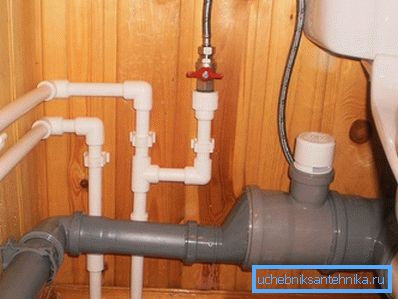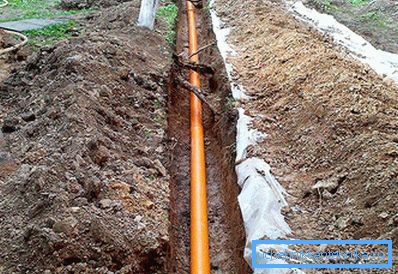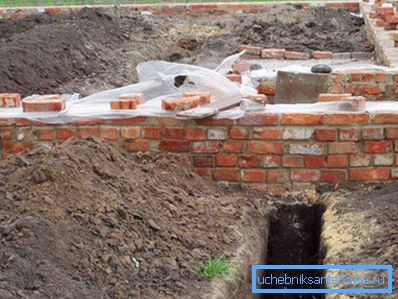Installation of sewage in a private house itself: the scheme
The organization of a properly functioning sewage system is perhaps the first priority that needs to be addressed. It is easiest to do this by resorting to the help of hired specialists, but this option would entail considerable expenses. The way out of the current situation can be laying the sewage with your own hands, which will not only save money, but also know for sure that there will be no system failures at the right moment.
Species
First of all, it should be noted that all work can be divided into two separate independent stages, requiring separate consideration.
- Inner. This includes all the elements located inside the house, such as fan pipes, risers, drain pipes, and so on.
- External Here we have in mind the totality of pipes connecting the internal sewage system and the drain hole, a septic tank.

It is worth noting that, depending on what stage is taken into work, you will need to use different tools and installation technologies.
Blueprints
However, despite the fact that there are several stages of work, there is an action that needs to be carried out in any case. It is about drawing up a detailed drawing of the sewer. Thanks to an accurate and competent plan, it is possible to significantly simplify the task to be carried out, and it is also easier to carry out a preliminary calculation of the amount of material. During the preparation of the plan it will be possible to experiment with the location of individual elements.

In order for the blueprint of the future sewage system to be as accurate as possible, it is necessary first to draw up a plan for the dwelling itself. If there was a construction of the house according to the drawings, then they will fit perfectly, and if there is no such documentation, then you need to make a plan yourself.
Tip! If the house has several floors, then in drawing up the drawings this circumstance must be taken into account, and the work must be done for each floor.
Internal

If all theoretical questions are clarified, you can proceed to the direct execution of work. Immediately it is necessary to determine which pipes will be used. The fact is that at one time the pipes used in the installation process were only metal. They remained today, however, as an alternative it is better to use plastic options (PVC and PP). Plastic pipes are much more convenient in work, have less weight and are not susceptible to corrosion. You can add that the pipes are available in two colors. Gray color are usually suitable for interior work, and orange are used for laying sewage outside.
Installation of the internal sewage system should begin with the installation of a central riser and a funnel pipe.
Tip! The diameter of a pipe suitable for this purpose should be 100–110 mm. The capacity of pipes of this diameter will be enough to fulfill their functions.

As for the location of the riser, then it should be installed as close as possible to the toilet, since organic waste should be discharged first. The rest of the layout of internal sewage pipes should be carried out taking into account the location of this element.
It is important to ensure that the location of the pipes was organized with a slight bias towards their connection to the riser. All joints of individual elements of the system should be sealed as much as possible, for which you can use silicone sealants. In addition, special attention should be paid to the location of the central sewer pipe on the street.
External

After the installation of the internal segment of the waste disposal system, you can proceed to the arrangement of external sewage systems. Here the works are quite simple.
- First a trench must be dug in the ground for laying a pipe. It is necessary to take into account a number of factors, among which we can mention the depth of frost penetration in winter (most often this indicator is not more than 2 m), as well as the need to organize a slope sufficient for free flow of water (2 cm per linear meter). Among other things, it is worth adding that the fewer bends of the pipe, the better.
- This is followed by preparing the place where all the waste will be discharged. This may be a simple cesspit, and a septic tank, and an airtight storage tank. It is possible to connect to the central sewage system, if there is one, but this will entail the need to coordinate work with the relevant services.
- After all the previous stages are completed, you can begin to lay the pipes themselves. As mentioned above, for these purposes it is necessary to use PVC pipes painted in orange color. They are able to cope with heavy loads during operation. The pipes should be laid on a sand pad that performs cushioning functions.

Video: how to build and assemble internal sewers
And watching this video, you can use useful tips and adopt the instructions for laying outdoor sewers.